1. Oversized Garden Gnomes

Yes, they’re quirky, but when a gnome is taller than a toddler and holding a beer, it’s less “storybook charm” and more “what were they thinking?” Garden gnomes are classic, but some newer versions veer into the bizarre or downright offensive. If your lawn is beginning to resemble a gnome convention, neighbors might start whispering. It’s not the existence of gnomes that raises eyebrows—it’s the volume and vibes.
People tend to appreciate tasteful whimsy in small doses, not a battalion of ceramic bearded men. Giant or risqué gnomes can make even the most garden-loving neighbor feel secondhand embarrassment. They’re also notoriously divisive; some find them cute, others see visual clutter. When it comes to décor, size and quantity definitely matter.
2. Loud Wind Chimes
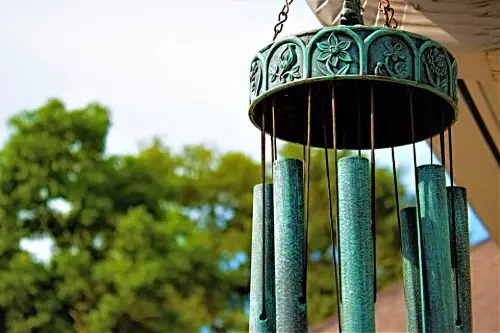
Wind chimes can be peaceful, until they sound like an angry jazz band during every breeze. Materials like metal or bamboo amplify sound, especially in windy areas. What you think is soothing might be what’s keeping your neighbor up at night. It’s hard to appreciate tranquility when it clangs at 2 a.m.
Some cities and neighborhoods even have noise ordinances that cover excessive wind chime sounds. It’s not that people hate chimes—they just prefer them in moderation. A soft, occasional tinkling is charming; a 24/7 percussion section is not. If your chimes are more concert than accent, expect some side-eye.
3. Plastic Flamingos
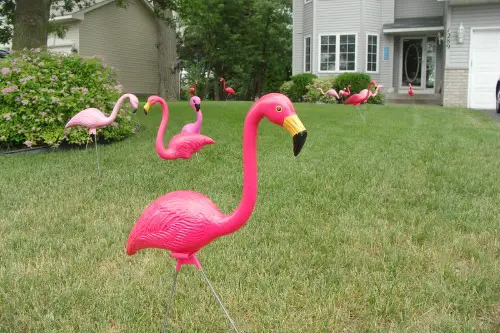
A single flamingo? Funny. Ten of them in formation? That’s a visual turf war. While they started as a kitschy joke in the 1950s, plastic flamingos now walk the line between retro and regrettable.
Some homeowners love the humor or nostalgia, but too many can read as garish or even defiant. They clash with manicured lawns and curated landscapes. And in upscale neighborhoods, they can feel like an intentional jab at aesthetic norms. Even if you love them, your neighbors may see them as visual noise.
4. Motion-Activated Sprinklers

These sound practical—they deter raccoons, deer, and even the neighbor’s dog. But when they’re set to “hair-trigger mode,” innocent passersby end up drenched. It’s funny the first time, but after that, it’s just passive-aggressive landscaping. Plus, a misfire during a sunny afternoon walk can turn a friendly neighbor into a silent critic fast.
The issue isn’t the sprinkler itself; it’s the overly sensitive settings or poor placement. When aimed near sidewalks or driveways, they become neighborhood booby traps. It’s an instant conversation starter, sure—but not always a positive one. Your yard shouldn’t feel like a prank waiting to happen.
5. DIY Water Features Gone Wrong

A bubbling fountain sounds relaxing, but if it’s held together with duct tape and leaks constantly, it’s more mess than meditation. Many DIY water features end up looking half-finished or overly ambitious. When pumps are loud or water gets stagnant, neighbors notice—and not in a good way. That serene babbling brook becomes more like a noisy science project.
Poorly maintained features can also attract mosquitoes, algae, and mold. What starts as peaceful ambiance can quickly become a health hazard. Even small fountains need regular cleaning and upkeep. Without it, the charm fades and critiques creep in.
6. Solar Lights—Too Many, Too Bright
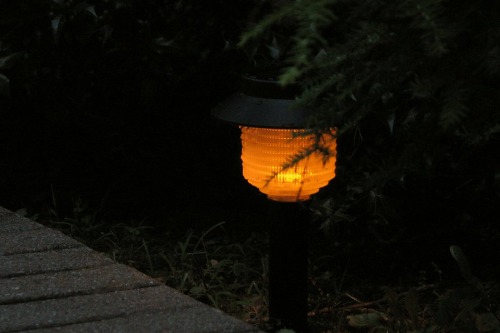
Solar path lights are great for guiding steps, but when your yard’s lit like an airport runway, it’s a problem. Some models emit harsh blue-white light that feels more clinical than cozy. Excessive placement—lining every path, tree, and shrub—creates glare that spills over fences. Your garden shouldn’t keep the whole street awake.
In dense neighborhoods, too much outdoor lighting can disrupt sleep or stargazing. Glare can shine into bedroom windows or reflect off windows like a spotlight. A little lighting goes a long way, especially with warm tones and strategic placement. Think glow, not glow-in-the-dark.
7. Fake Grass
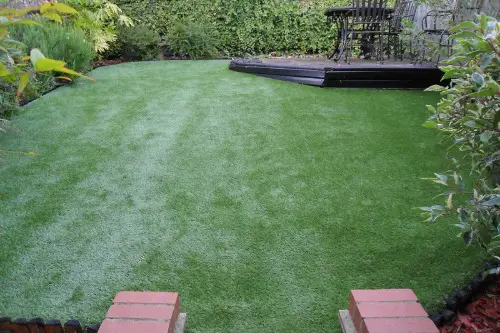
Synthetic turf can be practical in drought-prone areas, but it’s not fooling anyone up close. It often looks too perfect—unnaturally green and stiff underfoot. While low maintenance, it can also get scorching hot in direct sun and lacks the ecological benefits of real grass. Bees, birds, and even earthworms get excluded from the artificial lawn party.
In eco-conscious communities, it may be seen as a shortcut or even a misstep. Plus, runoff from cleaning agents used on turf can damage surrounding plant life. Some HOA guidelines even restrict its use for aesthetic reasons. A perfectly manicured fake lawn can still trigger real opinions.
8. Inflatable Holiday Decor Left Up Too Long
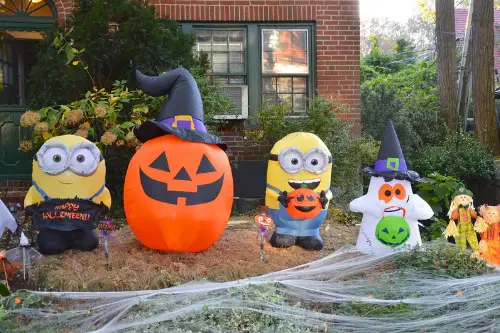
Giant inflatable pumpkins in October? Festive. Still there in mid-November? Not so much. Leaving seasonal inflatables up past their time makes your yard look like it’s stuck in a time warp.
These decorations are eye-catching, but they deflate (literally and figuratively) fast. A sad, crumpled Santa in March invites judgment, not joy. And when weather beats them up, they can look more like garbage than celebration. Timeliness is key if you want to avoid the whispers.
9. Trellises With No Vines (Yet)

A bare trellis can look like something got forgotten mid-project. While it promises future beauty, right now it might read as construction clutter. Without vines or climbing plants, it lacks purpose and sticks out like scaffolding. Your neighbors might be wondering if it’s decor or a mistake.
This is one of those “wait for it” features, and timing matters. If the plants don’t grow quickly—or die off—it ends up looking like a failed experiment. Trellises work best when installed just as the vines are ready to go. Until then, you might be the subject of quiet backyard critiques.
This post 9 Garden Additions That Turn Neighbors Into Secret Critics was first published on Greenhouse Black.
